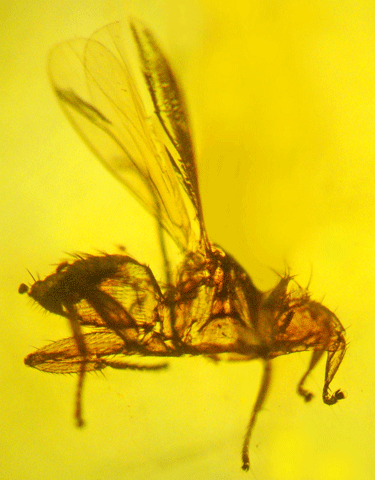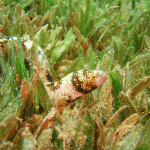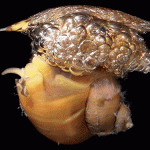
This is the only known fossil of a bat fly, a specimen at least 20 million years old that carried malaria and fed on the blood of bats. Photo by George Poinar, Jr., courtesy of Oregon State University via Flickr.
A new genus of bat fly has been discovered entombed in amber.
Bat flies are tiny, disease carrying insects that prey exclusively on bats, residing in their hairs or on the wing membranes and feeding on their blood. A new discovery of a fossil of a bat fly suggests that they have been doing this for at least 20 million years.
The fossil was discovered in amber from the Dominican Republic by researchers from Oregon State University in the US. The amber is believed to have formed 20 to 30 million years ago from oozing sap, entombing the insect in the process.
This is the first fossil found of a bat fly and its age indicates just how long the bats have endured these parasites. “Bats are mammals that go back about 50 million years, the only true flying mammal, and the earliest species had claws and climbed trees,” said George Poinar, Jr, author of the study published in Systematic Parasitology and Parasites and Vectors.
“We now know that bat flies have been parasitizing them for at least half that time, and they are found exclusively in their fur. They are somewhat flat-sided like a flea, allowing them to move more easily through bat fur.”
The bat fly genus discovered in this research is now extinct, but other species of bat fly are reasonably common and can be found around the world. However, not every bat is infested with these blood suckers- some of them are specific to certain species of bat.
“Bat flies are a remarkable case of specific evolution, animals that have co-evolved with bats and are found nowhere else,” Poinar said.
The bat fly was also carrying malaria, suggesting that it has been present in the New World since the Tertiary. Amber is well known, both in science and fiction, for its ability to preserve insects.
However, it also preserves any microbial pathogens that they may be carrying. Scientists have found malaria, leishmaniasis and trypanosomiasis from other insects in amber deposits, ranging from 20 to 100 million years of age.
Source: Oregon State University.






